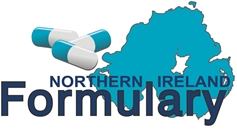Do not prescribe SABAs to people of any age with asthma without a concomitant prescription of an ICS.
Prescribe an inhaler with a lower carbon impact where possible – resources can be found here.
Prescribing Notes
General
- Do not prescribe SABAs to people of any age with asthma without a concomitant prescription of an ICS, see NICE NG245 and MHRA.
- There is no substantial difference in efficacy between salbutamol and terbutaline; currently salbutamol is less expensive and available in a wider range of devices.
- A respiratory disease diagnosis should be made before repeating a supply of SABA inhaler. Ensure SABA is prescribed along with an ICS for individuals with asthma.
- Low carbon prescribing: Offer dry powder inhalers (DPIs) as first choice when clinically appropriate. If a metered dose inhaler (MDI) is required chose a brand with a lower carbon footprint, e.g. Salamol® 100 inhaler CFC free (MDI).
- Oral beta-2 agonists have an increased risk of side-effects and should only be prescribed in exceptional cases where inhaled therapies cannot be used. Patients currently prescribed oral beta-2 agonists should be reviewed and a switch to inhaled therapy considered.
Asthma
- A low-dose ICS/formoterol combination inhaler (AIR) is now the preferred choice of treatment for newly diagnosed adult asthma patients and those stepping down from MART. A separate SABA inhaler is not required in these patients. See NICE NG245 and section 3.2.2 for choices.
- Prescribing three or more SABA inhalers per year is associated with an increased risk of severe exacerbations and mortality, and reflects very poorly controlled asthma. Asthma patients prescribed three or more SABA inhalers in the previous 12 months should be prioritised for review.
